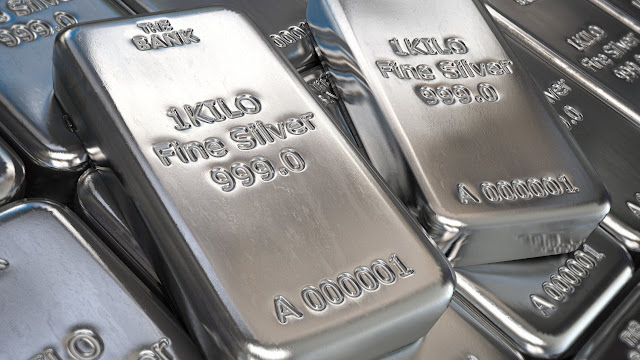Top Mistakes to Avoid When Shopping for Silver Bullion
Investing in silver bullion can be a smart and secure way to diversify your portfolio, protect against inflation, and preserve wealth for the future. However, shopping for silver—especially for first-time buyers—can come with risks if you're not careful. Making the wrong decisions could lead to overpaying, buying from unreliable sources, or choosing products that don’t meet your investment needs.
To help you make confident and informed purchases, here are the top mistakes to avoid when shopping for silver bullion.
1. Not Understanding the Difference Between Bullion and Collectibles
One of the most common mistakes new buyers make is confusing Shop silver bullion with collectible or numismatic coins. While both can be made of silver, they serve different purposes.
-
Bullion is valued primarily based on its metal content and weight.
-
Collectibles carry a premium due to rarity, age, or historical significance.
If your goal is investment and wealth preservation, stick with recognized silver bullion products such as 1 oz silver bars or government-issued coins like the Canadian Silver Maple Leaf.
2. Ignoring the Spot Price
The spot price of silver is the current market price per ounce. It fluctuates daily based on global supply and demand. Many buyers make the mistake of not checking the spot price before making a purchase, which can lead to paying too much.
Before you shop:
-
Check the live silver spot price on reputable websites like Kitco or Canadian Bullion.
-
Compare premiums (the amount above spot) across dealers.
-
Understand that lower premiums usually mean better value.
3. Buying from Unverified or Untrustworthy Dealers
With silver's rising popularity, scam websites and untrustworthy sellers have become more common. Never buy silver bullion from an unknown source without doing your research.
Tips for avoiding shady dealers:
-
Look for customer reviews on third-party sites.
-
Check if the company is listed with the Better Business Bureau (BBB).
-
Make sure the website uses secure checkout (HTTPS).
-
Confirm they offer insured delivery or in-store pickup.
Trusted Canadian dealers include:
-
Canadian Bullion
-
Silver Gold Bull
-
Kitco
-
TD Precious Metals
4. Not Considering Storage and Security
Once you’ve purchased silver bullion, you’ll need to keep it safe. Many new investors overlook this part of the process.
Common storage mistakes include:
-
Keeping silver in an unsecured drawer or closet
-
Not insuring your bullion
-
Forgetting where it’s hidden (yes, it happens!)
Options for safe storage:
-
A home safe that is fireproof and securely anchored
-
A safety deposit box at a bank
-
Third-party precious metals storage facilities (some dealers offer this)
5. Overlooking Product Type and Size
Silver bullion comes in many forms—bars, coins, rounds, and even large kilobars. A mistake some investors make is buying only large bars thinking they offer better value, without considering liquidity.
Smaller denominations, like 1 oz or 10 oz bars and coins, are:
-
Easier to sell or trade
-
More flexible for partial liquidation
-
Ideal for beginners
Larger bars, while offering lower premiums, can be harder to sell if you want to cash out in smaller amounts.
6. Not Keeping Purchase Records
Silver bullion is a physical asset. If you don’t maintain proper records of what you purchased, from whom, and at what price, it can create confusion when you’re ready to sell—or for estate planning later.
Always keep:
-
Digital and printed receipts
-
Product descriptions and weights
-
Dealer contact information
This documentation will make future sales and tax reporting much easier.
7. Buying on Emotion, Not Strategy
Silver prices can be volatile. Many people get caught up in the hype or fear of missing out (FOMO), buying impulsively when prices spike. Others may sell too soon during a dip, missing long-term gains.
Avoid emotional decision-making by:
-
Setting clear goals (wealth preservation, retirement hedge, short-term speculation)
-
Sticking to a dollar-cost averaging strategy
-
Following trusted market news, not social media hype
8. Overpaying for Fancy Packaging
Some bullion products come with elaborate packaging or “limited edition” features that drive up the cost. These extras often don’t increase the value of your silver when you go to sell it.
Focus on:
-
Recognized products from trusted mints (Royal Canadian Mint, PAMP Suisse, etc.)
-
Purity (.999 or .9999)
-
Weight (typically 1 oz, 10 oz, or 100 oz)
Skip unnecessary add-ons that don’t serve your financial goals.
Conclusion
Buying silver bullion is a smart step toward building a more resilient financial future, but it requires knowledge and discipline. By avoiding these common mistakes—such as ignoring spot prices, choosing unreliable dealers, or neglecting storage—you’ll set yourself up for success in the precious metals market.
Whether you're buying online from trusted Canadian platforms like Canadian Bullion, or visiting a reputable local shop, make sure every purchase is informed, strategic, and secure. In the world of silver investing, what you don’t do is just as important as what you do.



Comments
Post a Comment